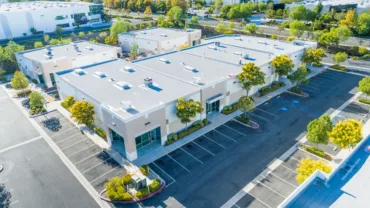Clients demand best-in-class knowledge management; lawyers who have all the information they need at their fingertips. The days of going down to the basement archives to look up details or popping into a colleague’s office to get up to speed are long gone, with legal project management software becoming the standard for forward-thinking law firms. For those still mired in traditional methods, the COVID-19 pandemic presented an adapt-or-die ultimatum — assuming it wasn’t already too late.
By its nature, the practice of law generates vast quantities of data over time, much of which needs to be preserved indefinitely and remain immediately accessible. But that data must be curated in such a way that it is retrievable at any time, easily understood, and stored in siloes only to the extent that is needed, to enable cross-referencing and integration of related knowledge.
Knowledge management vs legal project management
Knowledge management has always been integral to the working of any law firm, but the technology available to support it has come an extremely long way in a very short time. Lawyers are busy professionals with no time to search through reams of unrelated or irrelevant data, so the solution’s housekeeping must be as simple, effective, and orderly as the tech can make it. Happily, information management and search functionality have become far more powerful in just the last few years, making it easier and more efficient to drill down to find exactly the information you want, when you need it.
Legal project management software goes beyond knowledge management to streamline the planning, execution, and closing of individual projects:
Planning
In the initial phase, project management tools can be set up providing instant access. That can mean anything from scope of work assumptions, objectives, deliverables, and initial documentation, to setting client expectations.
Execution
During the phase in which the actual work is done, it’s important to be able to track progress against the original plan – from both a scope and a budget perspective. Powerful project management dashboards can be customized to track status, risks, and costs over time and convey that information to the relevant stakeholders.
Tracking activity makes it easy to manage assigned tasks and track dependencies. By keeping everything in one place, collaboration and communication are streamlined because the whole team works via a single platform.
Closing
In the final phase, a legal project management suite should document all completion tasks that remain to be done. You can capture client feedback, measure how the project has developed against the original plan, and capture both best practices and lessons learned.
This information can be used to inform future marketing efforts and client presentations, demonstrating your firm’s ability to deliver work and improve efficiency using technology.
Lastly, the data captured can enable you to identify opportunities and challenges – insights you’ll need to implement continuous improvement and gain a competitive advantage.
Choosing the right legal project management tech for your firm
Technology can be a huge enabler of effective legal project management but identifying the system that’s right for your firm can be hard. Any solution you choose must both make your firm operate more efficiently and ensure that you are more responsive to change.
Here are the most important features to look for in a legal project management solution:
- Secure document management reduces version control issues, ensuring that all parties are working on the most up-to-date draft of any document. More importantly, it keeps key documents secure, ensuring compliance with governance standards and regulatory requirements such as GDPR and CCPA and providing peace of mind to both your firm and its clients. It enables you to track updates, changes, and questions in real-time with fewer email attachments sent back and forth.
- Integrated communication tools keep all project communication in one place. Colleagues are able to collaborate from a distance, whether across the office or across the country – or across the globe. Cloud-based file access makes it easy to get the answers you need, no matter where you are.
- Matter planning and task-tracking functionality help project managers to systematize projects, manage tasks and track progress. This enables clear visualization of the steps and actions that lie ahead and who is responsible for managing each. It also makes it easier for project managers to handle multiple projects at once and for lawyers to immediately identify what needs to be tackled next.
- Simple workflow and automation tools make it easy for anyone in the firm to create workflows and program automation without any need for coding knowledge. Automating repetitive manual tasks saves both time and effort, simplifying complex processes and cutting down workloads. This frees up colleagues to focus their time on matters that require their unique knowledge and expertise.
- Real-time project tracking dashboards give at-a-glance updates on projects with data in real-time, not static reports at intervals that may not provide a clear picture of progress.
- Easy access management also offers clients the visibility they need. Making it easy for clients to self-serve by finding the information they need on their own time relieves pressure on your colleagues and offers clients convenience. Secure document storage means you can provide them with this access, confident that they can only see what you want them to.
While these are the must-have features, law firms also need to consider their unique needs. When facing a variety of options, flexibility may be among the most important. Adopting technology like HighQ can help your firm adapt to remain competitive and allow you to rest easy knowing you’ve found a solution that reflects your present – and future – approach to LPM.
Read more about why innovative law firms so often turn to HighQ.







